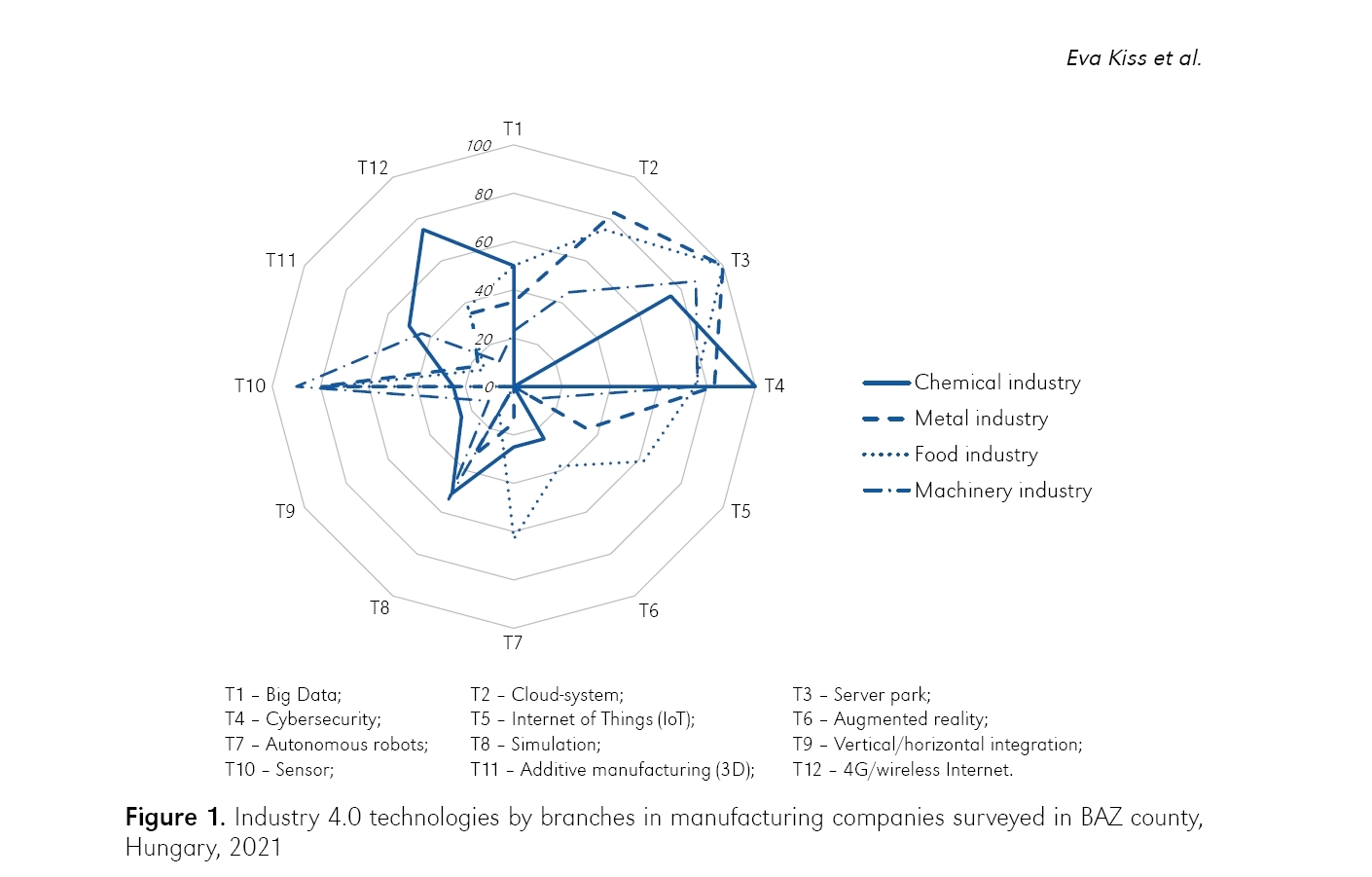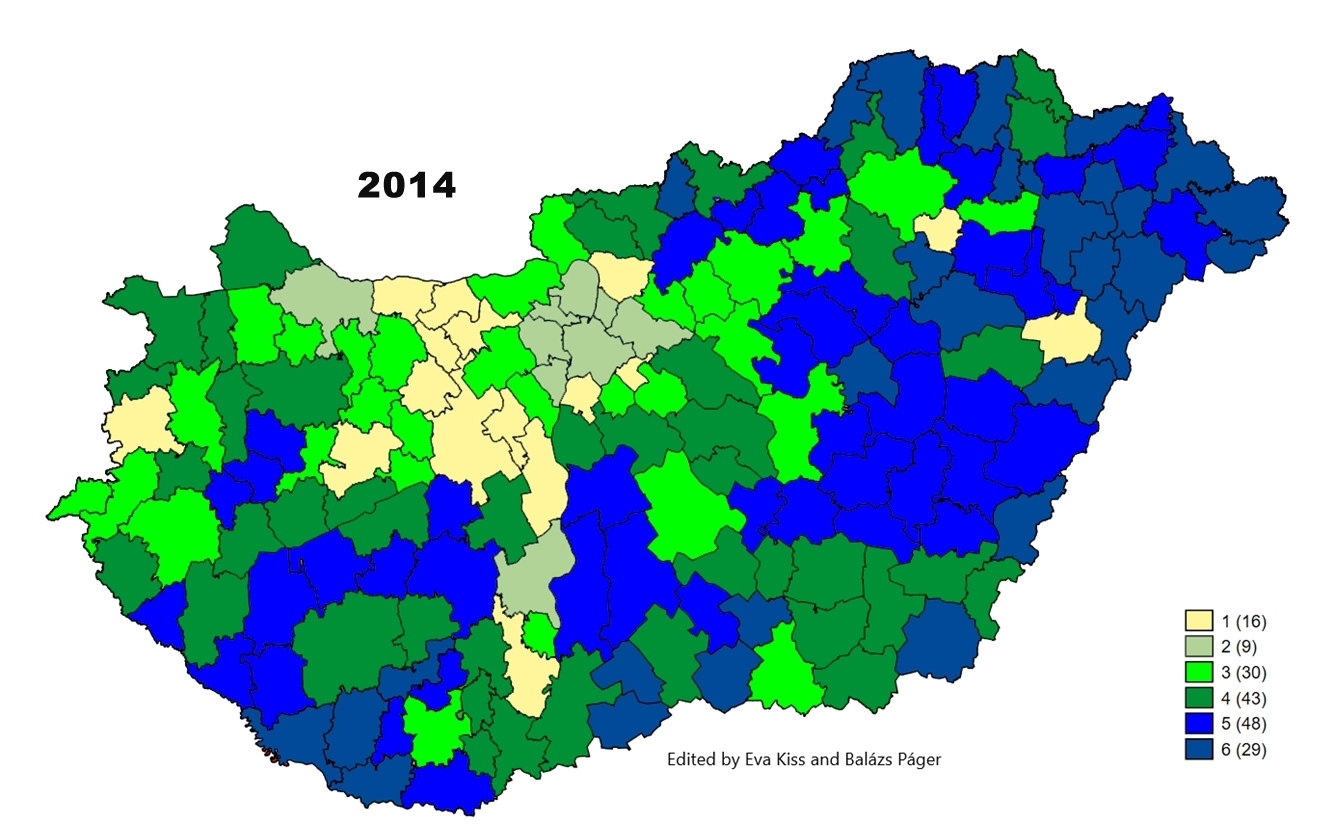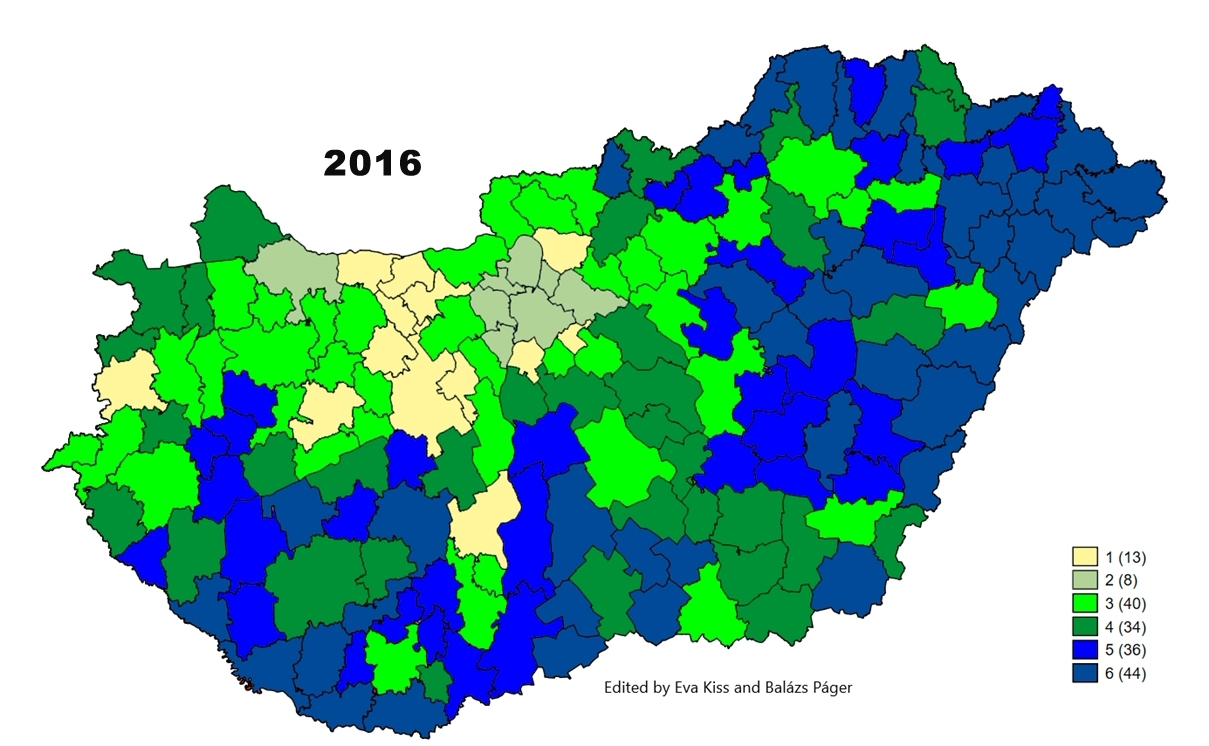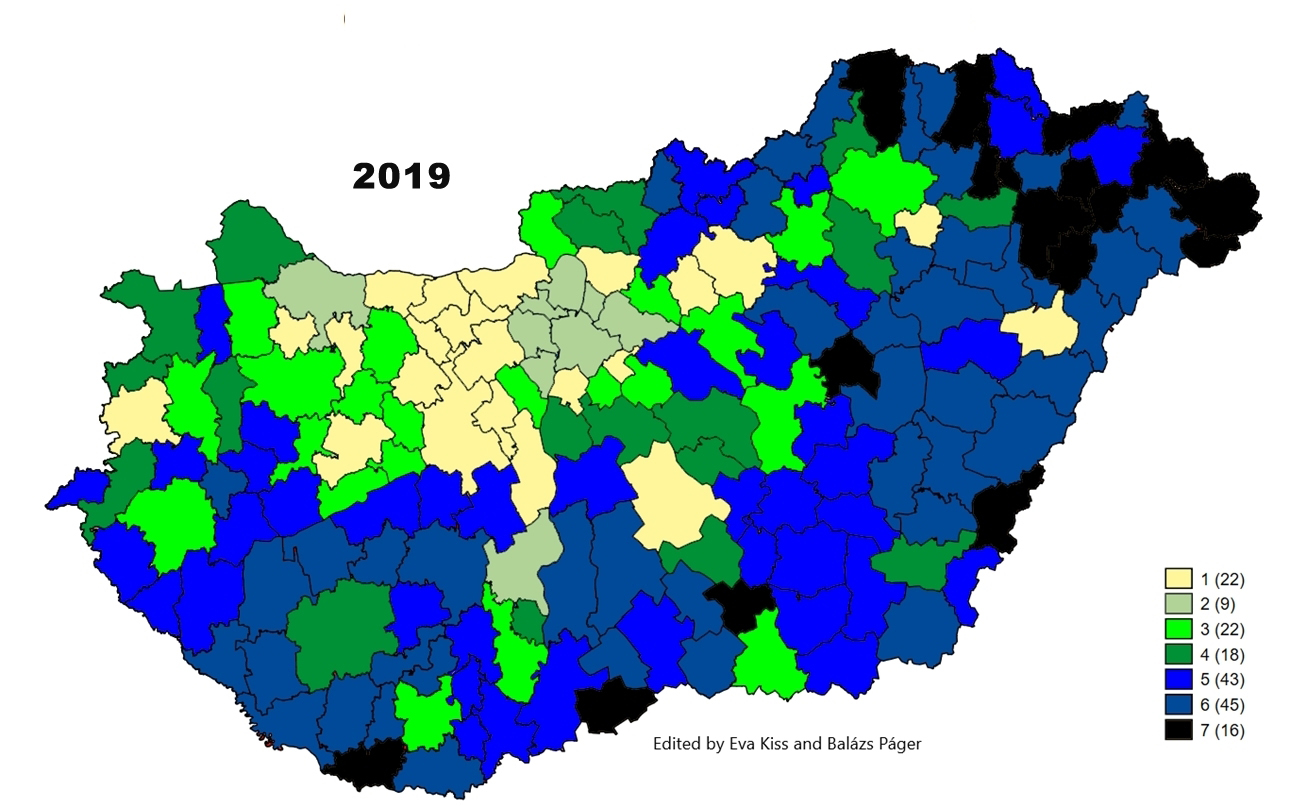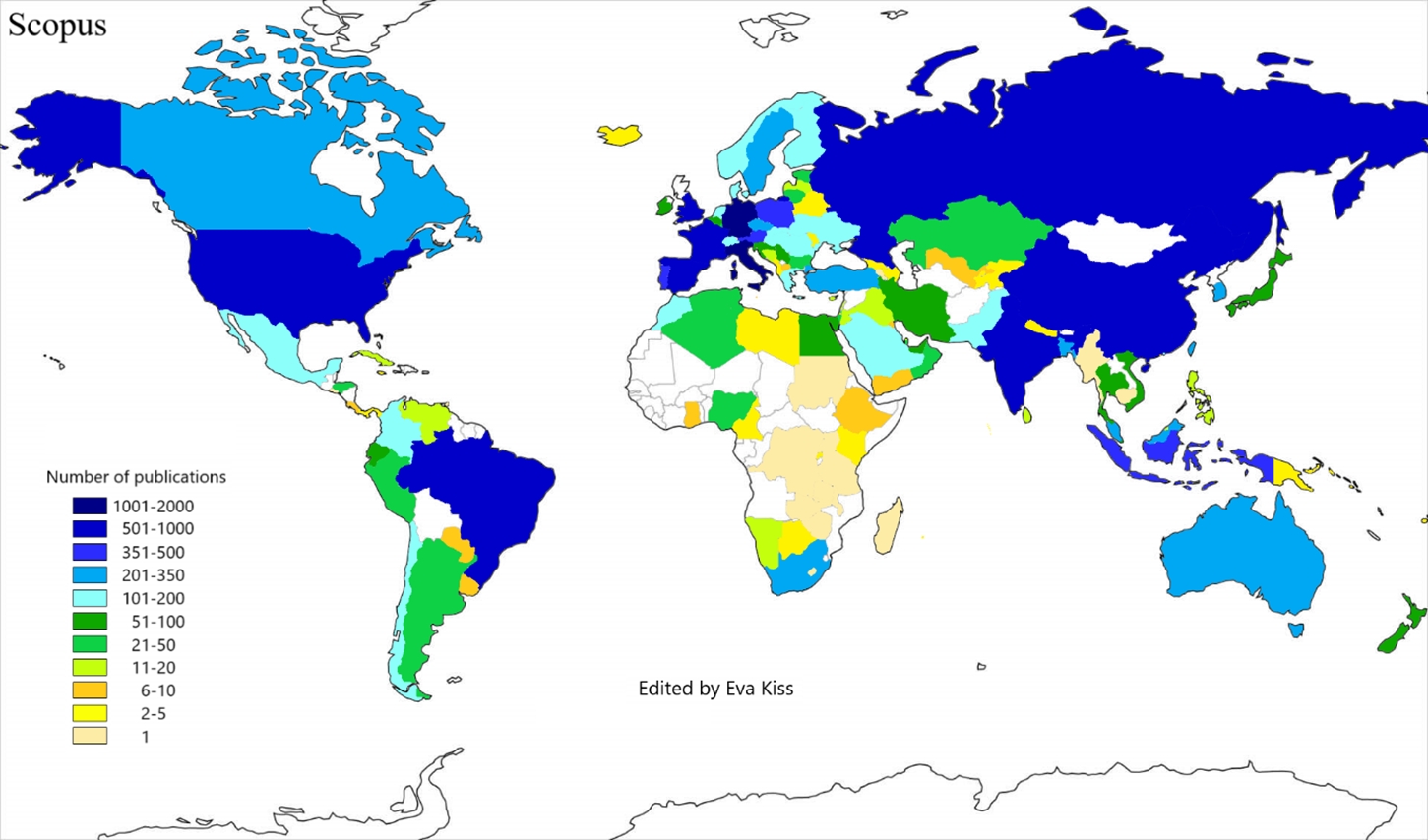The goal of Industry 4.0 research
In recent years, the investigation of the industrial and geographical connections of the fourth industrial revolution and Industry 4.0 technologies has received special attention in industrial geography research.
We examined the factors affecting the spread and application of new technologies in the Hungarian manufacturing industry from different aspects and using various methods. Also important research questions were how the progress of Industry 4.0 affects the employment of industrial enterprises, what expectations it places on the workforce, how it encourages university-industry-government cooperation, the digitalisation of health industry companies and how all these processes appear in the spatial pattern of Hungarian industry. The research entitled: "New trends in the spatial structure of Hungarian industry in connection with the fourth industrial revolution" was supported by NKFIH between 2017 and 2023 (project number K125091).

